Authentic Irish Brown Bread Recipe: Your Go-To No-Yeast Quick Bread
Prepare to fall in love with this incredible Irish Brown Bread recipe! It’s everything you could ask for in a traditional Irish quick bread: hearty, wonderfully rustic, unbelievably easy to make, and utterly irresistible. The best part? No yeast is required, meaning you can whip up a batch and have it in the oven in mere minutes. Imagine a warm, thick slice, generously slathered with cold, creamy butter – pure bliss! This recipe brings the authentic taste of Ireland right into your kitchen.
Our unforgettable journey through Ireland left us with countless cherished memories, and among the most prominent were the culinary delights. Every pub and cafe we visited proudly served its own version of Irish Soda Bread, a staple that quickly became a highlight of every meal. While it’s the quintessential treat for St. Patrick’s Day celebrations, this simple yet profoundly satisfying bread is so easy and delicious, you’ll want to make it all year long.
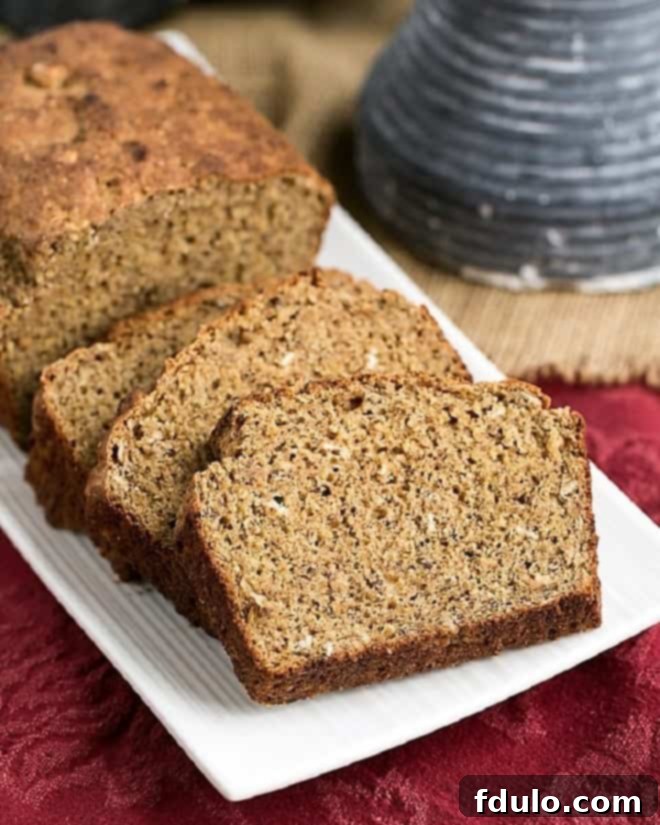
Why This Irish Brown Bread Recipe is a Must-Try
If you’re looking for a simple, wholesome, and incredibly satisfying bread recipe, look no further. This Irish Brown Bread stands out for several compelling reasons:
- Effortless & Quick: Since it’s a no-yeast bread, you skip the lengthy proofing times. This means less waiting and more enjoying! It’s a true quick bread, perfect for busy schedules.
- Authentic Irish Flavor: This recipe delivers the distinct, wholesome, and slightly sweet flavor profile of the brown bread we savored during our travels across Ireland. Each bite will transport you straight to the Emerald Isle.
- Wholesome & Less Sugar: Unlike many quick bread recipes that rely heavily on sugar, this Irish Brown Bread offers a healthier, more balanced alternative. Its richness comes from quality ingredients, making it a nutritious addition to any meal.
- Versatile for Any Occasion: While it’s a star for St. Patrick’s Day, its rustic charm and comforting taste make it suitable for breakfast, lunch, or dinner, any day of the year.
- Simple Ingredients: You likely have most of the ingredients already in your pantry, making it an accessible recipe for home bakers of all skill levels.
What Our Readers Are Saying About This Recipe:
Don’t just take our word for it! Here’s what delighted home bakers shared on Pinterest:
“Really excellent recipe. Slices beautifully and keeps well. No beer required.”
Beyond one memorable, slightly hair-raising experience with a jet-lagged driver navigating the “wrong” side of the road with his non-dominant hand, our trip to Ireland was a tapestry of enchanting moments. The vibrant pastel facades of village storefronts, the majestic peacocks gracefully roaming our countryside bed and breakfast, and the breathtakingly brilliant greens of the rolling hills are all vivid recollections.
But among these magical sights, the hearty, comforting Irish brown bread I diligently sought out on every pub menu holds a special place. Each establishment offered its unique take on this beloved soda bread, yet all shared common traits: a subtle sweetness, a satisfyingly dense texture, and an undeniable deliciousness that made every slice a true delight.
Key Ingredients for Your Authentic Irish Brown Bread
Crafting the perfect Irish Brown Bread starts with understanding the role of each ingredient. Here’s what you’ll need and why it matters:
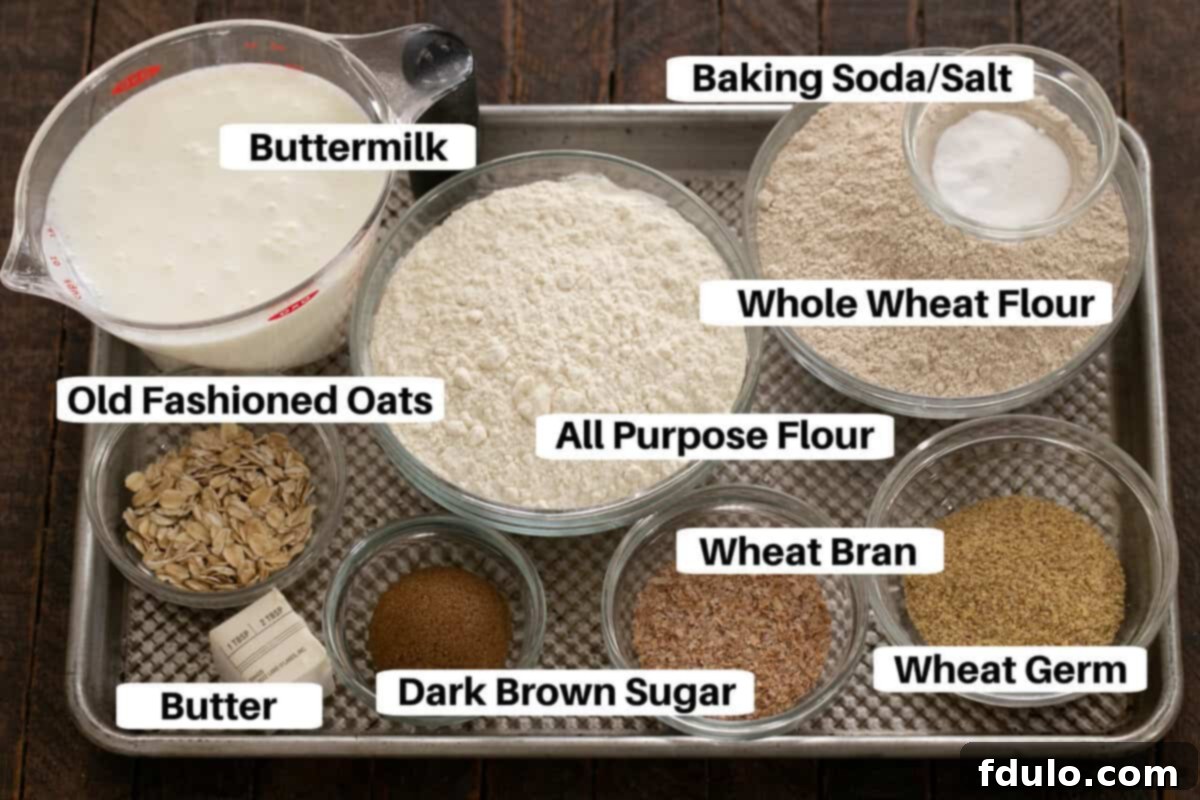
- All-Purpose Flour: Provides structure and a lighter texture, balancing the heavier whole wheat flour.
- Whole Wheat Flour: This is the star ingredient that gives Irish Brown Bread its characteristic hearty texture, darker color, and robust, nutty flavor. It’s essential for achieving that authentic taste.
- Old Fashioned Oatmeal: Crucial for texture and a rustic chewiness. Make sure to use old-fashioned (rolled) oats, not instant or quick oats, which can become mushy.
- Wheat Bran: Adds even more fiber, texture, and a deeper, earthy flavor. If not readily available in your local grocery store’s baking aisle, you might find it online or in health food stores.
- Wheat Germ: A nutritional powerhouse packed with vitamins and minerals, wheat germ contributes a subtle nutty flavor and enhances the bread’s wholesome profile. Look for it near the flours or in the natural foods section.
- Baking Soda: The primary leavening agent in soda bread. It reacts with the acidity of the buttermilk to produce carbon dioxide, creating the bread’s lift and characteristic crumb without yeast.
- Salt: Essential for balancing the flavors and enhancing the overall taste of the bread.
- Dark Brown Sugar: While only a small amount is used, dark brown sugar, with its higher molasses content, imparts a deeper caramel note and a hint of sweetness that makes this bread truly special.
- Cold Butter: Cut into pieces and rubbed into the dry ingredients, cold butter creates tender pockets in the dough, contributing to a wonderfully moist and rich crumb.
- Buttermilk: The critical ingredient for Irish Soda Bread! Its acidity reacts with the baking soda to leaven the bread, while also tenderizing the crumb and adding a distinct tangy flavor that is characteristic of traditional brown bread.
How to Bake the Perfect Irish Brown Bread: Step-by-Step Guide
Making this authentic Irish Brown Bread is surprisingly simple. Follow these steps for a perfect loaf every time:
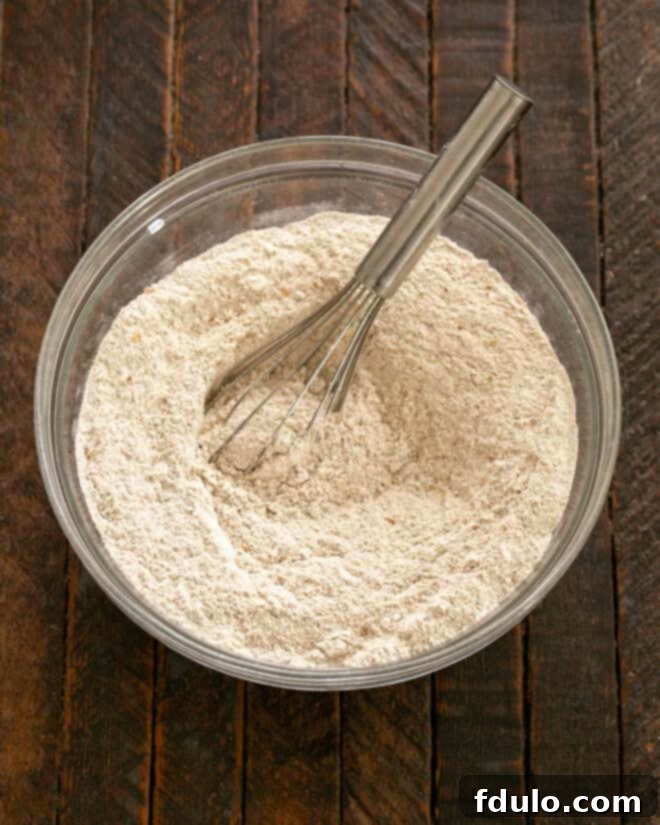
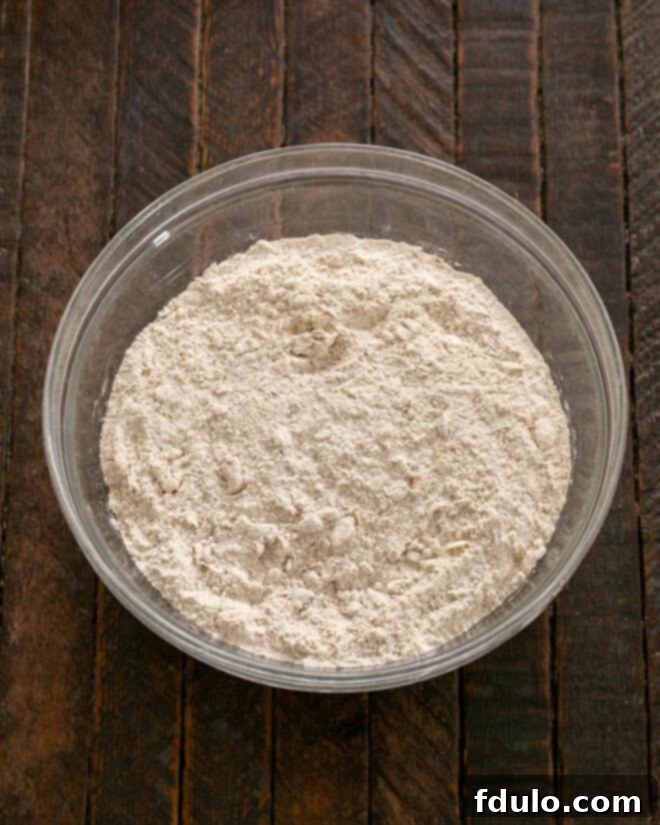
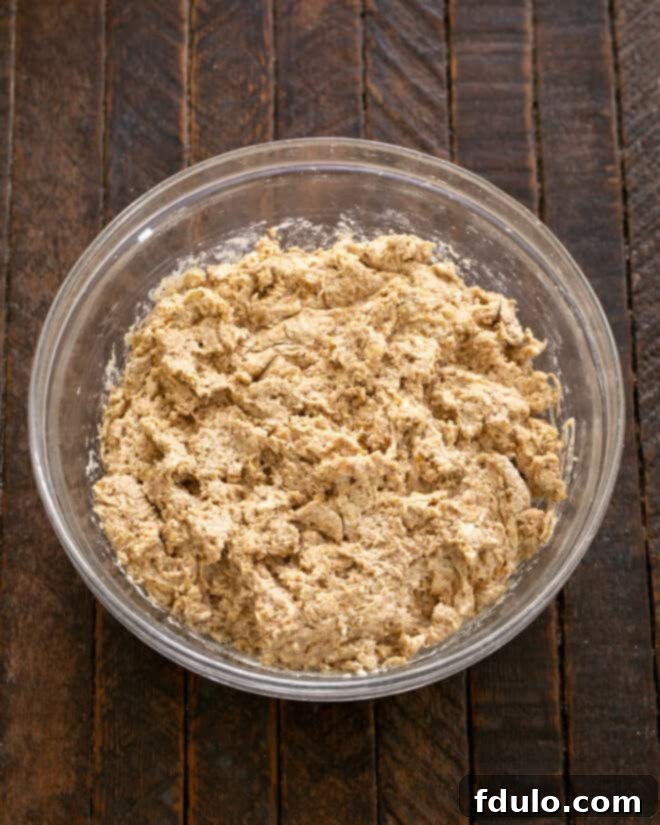
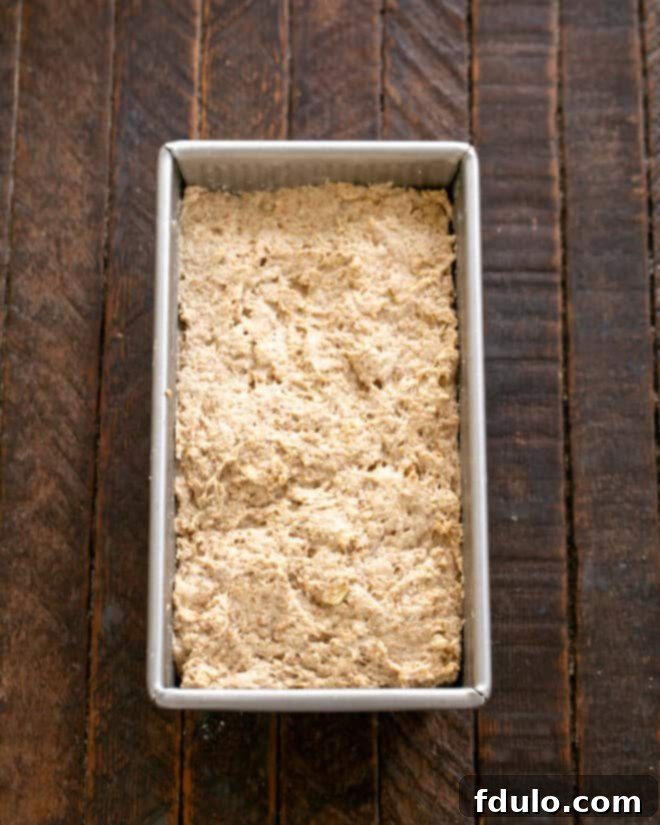

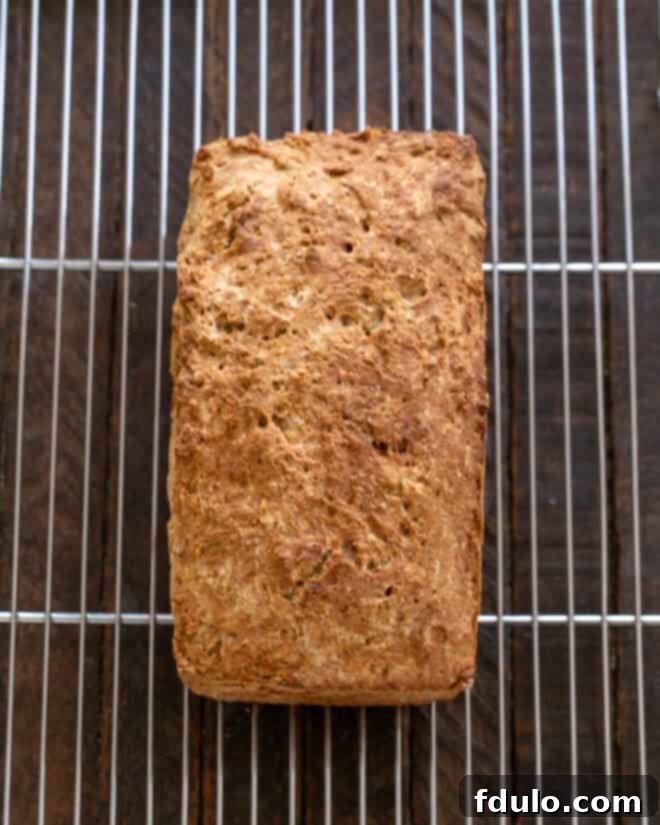
Expert Baking Tips for Perfect Irish Brown Bread
Upon our return from Ireland, I experimented with several recipes, but none quite captured the authentic flavor until I discovered this fantastic Bon Appetit version of Irish brown bread. It’s truly wonderful, not just for St. Patrick’s Day, but every single day of the year!
- Ensure Easy Release: If you’re concerned about your bread sticking to the pan, line the bottom with a rectangle of parchment paper before buttering the sides. This makes removal a breeze.
- Proper Cooling is Key: Always allow the bread to cool in the pan for about 15 minutes before transferring it to a wire rack. This initial cooling helps the bread firm up and prevents it from breaking when you remove it. Cooling on a rack allows air circulation, preventing a soggy bottom.
- Check Baking Soda Freshness: While baking soda generally has a long shelf life, it can lose potency over time. To test its freshness, mix a small amount (about ¼ teaspoon) with a tablespoon of vinegar or lemon juice. If it vigorously bubbles, it’s still good to use.
- Avoid Overmixing: This is arguably the most crucial tip for any quick bread, including Irish soda bread. Overmixing develops the gluten in the flour, leading to a tough, dense, and “tunneled” crumb. Mix only until the ingredients are just combined. A few lumps are perfectly fine!
- PRO-Tip: Homemade Buttermilk: No buttermilk on hand? No problem! You can easily make a substitute. Add a tablespoon of lemon juice or white vinegar to a 1-cup liquid measuring cup. Then, fill the rest of the cup with milk (dairy or non-dairy) to the 1-cup mark. Stir gently and let it sit for 5-10 minutes until it slightly curdles. Use this “buttermilk” as directed in the recipe.
- PRO-Tip: Create Dark Brown Sugar: If you only have light brown sugar, you can transform it into dark brown sugar. For every cup of light brown sugar, mix in 1 tablespoon of molasses. For this specific recipe, you’ll need 2 tablespoons of dark brown sugar, so you can make a smaller batch by mixing ⅓ cup of light brown sugar with 1 teaspoon of molasses.
- Add a Decorative Touch: For extra visual appeal and a delightful textural contrast, sprinkle some additional old-fashioned oats or a bit of wheat bran over the top of the dough before baking.
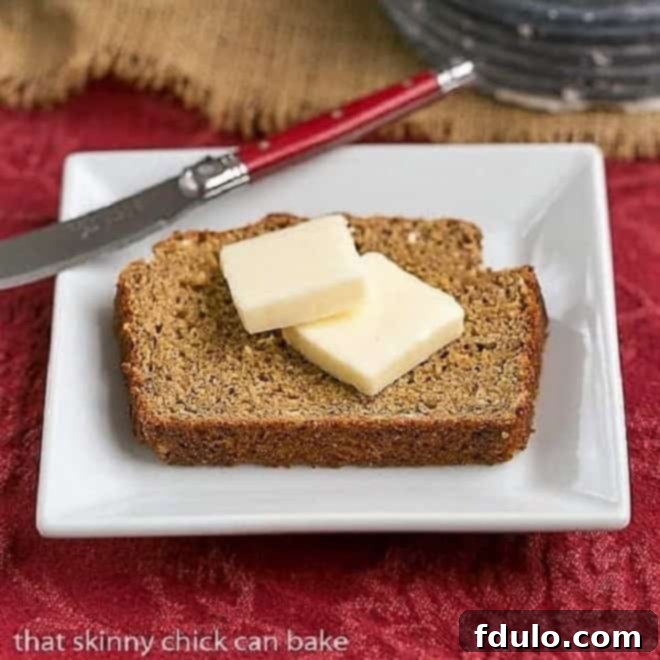
Frequently Asked Questions About Irish Brown Bread
This Irish brown bread recipe specifically calls for old-fashioned rolled oats. These provide a heartier texture and more substantial chew compared to quick-cooking or instant oats, which can become too soft and mushy in the bread.
To maintain its freshness, store your Irish brown bread wrapped well in plastic wrap or foil at room temperature for 3-4 days. If wrapped airtight, it freezes exceptionally well for up to 3 months. To thaw, simply unwrap and let it come to room temperature, or gently warm it in the oven.
You can test the doneness of your brown bread in a few ways:
- Toothpick Test: Insert a cake tester or a wooden toothpick into the center of the loaf. If it comes out clean with no wet crumbs, the bread is done.
- Internal Temperature: For the most accurate measure, use an instant-read thermometer. The internal temperature of the bread should register between 200-210°F (93-99°C).
- Sound Test: A well-baked loaf will sound hollow when tapped on the bottom.
While this specific recipe uses traditional flours, you might be able to adapt it using a gluten-free all-purpose flour blend (one designed for baking) and certified gluten-free oats. However, the texture will be different, and you may need to adjust the liquid slightly. We recommend using a recipe specifically developed for gluten-free Irish soda bread for the best results.
Irish Brown Bread is incredibly versatile! Enjoy it warm with a generous pat of butter, alongside a hearty stew or soup, with your morning eggs, or as part of a cheese board. It also makes a fantastic base for open-faced sandwiches with smoked salmon or savory spreads. Some people even enjoy it with jam or marmalade for a touch of sweetness.
More Delicious Bread Recipes You May Also Like:
- Rosemary Cheddar Irish Soda Bread from Foodness Gracious
- Wholesome Whole Wheat Molasses Quick Bread
- Nutty Sunflower Whole Wheat Bread
- Classic Irish Soda Bread
- Explore more of the Best Bread Recipes
Stay connected and share your culinary creations with us! Follow us on Instagram, Facebook, and Pinterest. Don’t forget to tag us when you try one of our recipes! And if you love the results, please consider giving it a 5-star rating in the recipe card below.

The Recipe:
Easy Irish Brown Bread
10 minutes
40 minutes
50 minutes
12 slices
A dense, delicious, and wonderfully authentic Irish Soda Bread made with wholesome whole wheat flour and a blend of hearty grains.
Rating: 4.7 stars based on 112 reviews
Ingredients
- 1 ¾ cups all-purpose flour
- 1 ¾ cups whole wheat flour
- 3 tablespoons wheat bran
- 3 tablespoons wheat germ
- 2 tablespoons old-fashioned oats
- 2 tablespoons dark brown sugar
- 1 teaspoon baking soda
- ½ teaspoon salt
- 2 tablespoons cold butter, cut into pieces
- 2 cups buttermilk
Instructions
- Preheat oven to 425°F (220°C). Lightly butter a 9 x 5 x 3-inch loaf pan and set aside.
- In a large bowl, combine all dry ingredients (both flours, wheat bran, wheat germ, oats, brown sugar, baking soda, and salt) and mix thoroughly to combine.
- Add the cold butter pieces to the dry mixture. Using your fingertips, rub the butter into the dry ingredients until the mixture resembles coarse cornmeal.
- Stir in the buttermilk, mixing just until a soft dough forms. Be careful not to over-mix the batter; a few lumps are normal.
- Scrape the dough into the prepared loaf pan, smoothing the top gently. Bake for about 40 minutes, or until a toothpick inserted into the center of the bread comes out clean.
- Remove the bread from the oven, let it cool in the pan for 15 minutes, then transfer it to a wire rack to cool completely before slicing.
Notes
Adapted from a traditional Bon Appetit recipe, optimized for authentic flavor and ease.
Nutrition Information:
Yield:
12
Serving Size:
1 slice
Amount Per Serving (estimated):
Calories: 178
Total Fat: 3g
Saturated Fat: 2g
Trans Fat: 0g
Unsaturated Fat: 1g
Cholesterol: 7mg
Sodium: 287mg
Carbohydrates: 32g
Fiber: 3g
Sugar: 4g
Protein: 6g
HOW MUCH DID YOU LOVE THIS RECIPE?
Please leave a comment on the blog or share a photo on Pinterest
